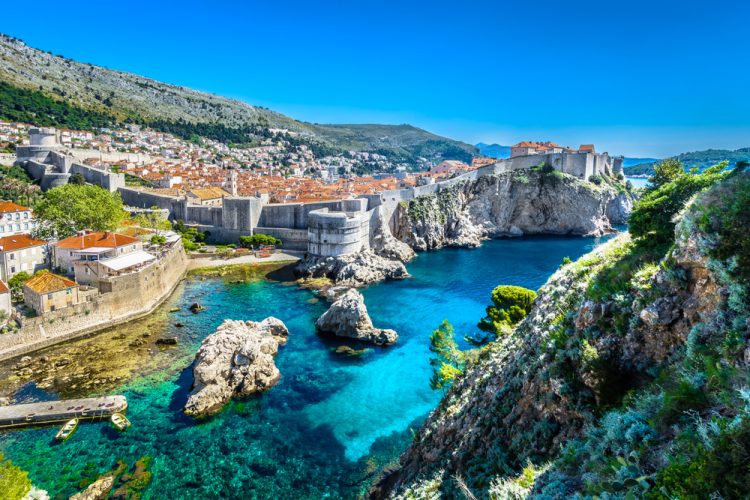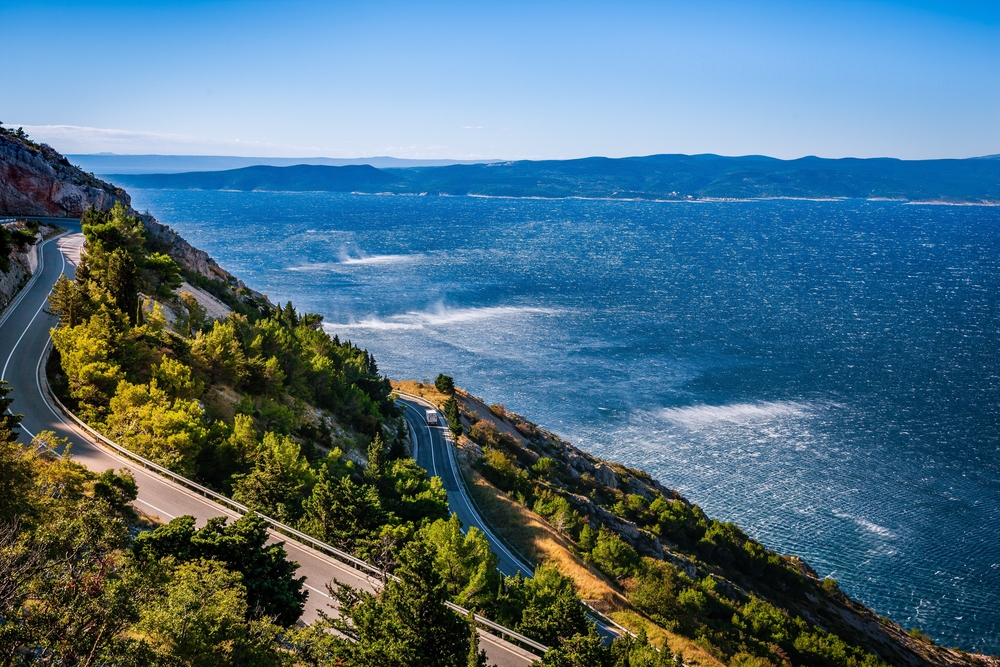The Dalmatian Coast is one of the most spectacular and rugged stretches of coastline in the world. The multitude of inlets shelter gorgeous cities of red-tile roofs and pristine beaches, while splinter-shaped islands line the coast. Behind it all, the Dinaric Alps rise up, a backdrop of incredible scenery.
 The thin sliver of coastline has always stood perched between two worlds: the mountainous wilds of the Balkans on the one side and the wider Mediterranean on the other. Around most of the Mediterranean, there is a gradual shift as one moves inland: cosmopolitan urbanity near the coasts gives way to the rusticism of the interior. The shift is much more abrupt along the Dalmatian Coast. The coastal mountains thrust up dramatically from the sea, confining towns and villages to tiny shards of land. The result is rather like an archipelago, with towns connected more by sea than by land.
The thin sliver of coastline has always stood perched between two worlds: the mountainous wilds of the Balkans on the one side and the wider Mediterranean on the other. Around most of the Mediterranean, there is a gradual shift as one moves inland: cosmopolitan urbanity near the coasts gives way to the rusticism of the interior. The shift is much more abrupt along the Dalmatian Coast. The coastal mountains thrust up dramatically from the sea, confining towns and villages to tiny shards of land. The result is rather like an archipelago, with towns connected more by sea than by land.

The region—roughly the Croatian coastline from the Istrian peninsula down to Montenegro—has only become a major tourist attraction in the days since the breakup of Yugoslavia. The isolation of Communism is partly to blame for Western ignorance of such a nearby gem. But in truth, the region was always ignored in the West outside of Italy.
Which is a shame. Not only is the region gorgeous, but it has a fascinating history. The city-states that grew up here in the Middle Ages somewhat followed the examples of the more famous Italian maritime republics.
Ancient Origins
The character of the place was truly formed in Late Antiquity, when barbarian hordes washed over the old civilizations of the Mediterranean. This isolated the narrow Dalmatian Coast from the backcountry, allowing a unique culture to form which retained much from ancient Rome. The region had long had a sophisticated civilization. It was absorbed early on by the expanding Roman Republic, which organized it into a province. The lowlanders quickly adopted the Latin language and Roman culture, made easy by sea traffic across the Adriatic.

Life was probably not much disrupted by the fall of the Western Roman Empire. The province came under barbarian rule, but residents continued to trade with Italy, fish, and farm what arable land there was. Justinian’s conquests of the 6th century brought the area back under Roman control, which brought with it tax-collectors and garrisons. But barbarian migrations continued long after the fall of the Western Roman Empire: by the 7th century, large numbers of Slavs had settled the upland forests of the central Balkans. These were the future Croats, Serbs, and Bulgarians. The wildness of the terrain and the fierce independence of the people cut the Dalmatian Coast off entirely from the land route to Constantinople.

The Slavic migrations also completely cut the Dalmatians off from their own interior. Geography had always made the Dalmatian Coast somewhat distinct from the rest of the Balkans—access to the interior was always difficult, and there were not many roads through the mountains. But the western Balkans had been fairly-well Latinized by the late Roman Empire, making it a somewhat coherent region.
From the 7th century onward, however, Slavic-speakers began to dominate these mountains and push toward the coast. Anyone traveling on the coastal route was liable to be ambushed and harassed, if not have their way blocked entirely. Slavic raiders forced the Dalmatians to organize defenses and fortify their cities.

Not all the cities survived this period—Salona, for instance, was destroyed sometime in the 7th century (actually by the Avars, not by Slavs). This had been the region’s most important city under the Roman Empire, and was near where Diocletian built his magnificent palace. After its sack, the population took refuge in the fortified palace grounds, which were expanded over time into a new city, Spalato. This would become one of the major ports of the Dalmatian Coast.
Ragusa had a similar founding story: an Avar-Slav raid destroyed the Roman town of Epidaurum, prompting the refugees to resettle on a small island some distance to the north. Thenceforth all the surviving settlements would maintain a precarious existence between their dangerous neighbors and the sea.
Dalmatia Endures
Cut off from the interior, the cities of the Dalmatian Coast turned to the sea. The sea had always been the mainstay of these people, but now their cities were basically little islands. Like that greatest of Adriatic islands, Venice, they had little hinterland and so depended on trade for their subsistence. Several of the major cities formed their own city-states—the biggest were Zara (modern Zadar), Spalato (Split), and Ragusa (Dubrovnik).

These holdouts continued to speak a dialect of Vulgar Latin. Over time, this evolved into the Dalmatian language, which was similar to Italian. Every city developed its own dialect, similar to how each valley has its own fashion of speaking in mountainous regions. Most of the cities continued to maintain political associations with Constantinople, which was far enough away to prevent meddling in their affairs, but strong enough to protect them against their enemies. The Byzantines were mostly interested in keeping the sea lanes open so they could reinforce their Italian provinces—having friendly coastal cities nearby could help with that.
Freebooters
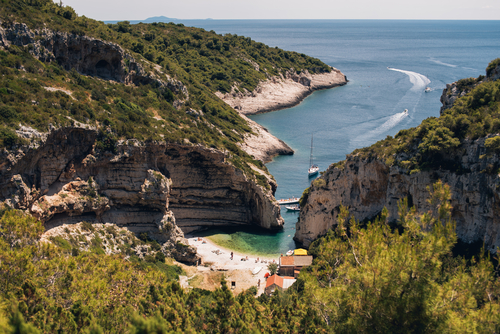
One of the biggest problems the early Dalmatian city-states faced was piracy. Pirates were familiar to the Adriatic since at least Roman times, but their activity only increased following the breakdown of central authority. This was especially so along the Dalmatian Coast because of the difficult geography: the sheer number of small coves and inlets provided ideal hiding spots for pirates.
Many stretches of the coastline were not under any effective political control. They might be legally part of the Duchy of Croatia or Principality of Serbia, but those states could hardly exercise effective governance in all their territory. So pirates had the run of the place, setting themselves up in forts on rugged islands or inaccessible mountaintops.
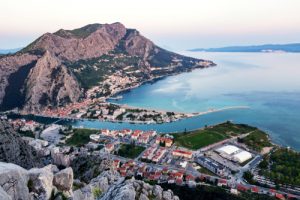
Nor were all the pirates local. Arab corsairs harassed Christian shipping all across the Mediterranean, operating from bases in Sicily, North Africa, and elsewhere. They soon realized the booty to be had in Dalmatia, and started making incursions into the Adriatic. Raiders could prey on ships and settlements for an entire season, concealing themselves in inlets between raids. The problem became quite severe as the pirates’ ambition grew to territorial conquest—Ragusa was subjected to a fifteen-month siege in 866, from which it was only spared when a Byzantine fleet arrived.
But the most formidable freebooters on the Adriatic were the Narentine pirates. These were a Slavic group that settled on the Neretva river, now in southern Croatia, sometime in the 7th century. Using the river as their base of operations, they began to terrorize the entire Adriatic, even raiding across the sea to Italy. In time they acquired sizable territory, coming to dominate many islands and the entire coastline between Ragusa and Spalato.
Queen of the Sea
An infestation of piracy is as disastrous for merchants as locusts are for farmers. The Dalmatian cities could not much longer endure, but were themselves were individually too weak to deal with the problem, and too jealous of one another to form an effective coalition. Their one-time protector, Byzantium, was far off and preoccupied with problems of their own, so the cities appealed to the strongest maritime power on the Adriatic for aid: Venice.
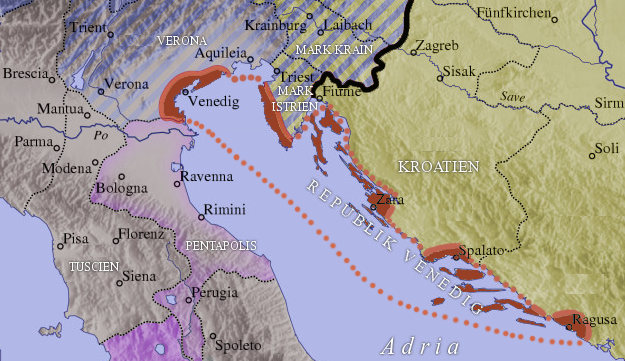
The hazardous waters Venetians ships navigated in the 9th and 10th centuries gave them considerable military experience, making them the natural choice to safeguard the Adriatic. The Venetians assembled a squadron and swept down the coast. Most of the pirates were easily dislodged, but the Narentines put up serious resistance; in the year 1000, they were defeated for good. At this point it became clear that the Venetians had a different understanding of its relationship with the Dalmatian cities. A Venetian delegation to Constantinople had produced an agreement with the Byzantines, so long the cities’ overlord, whereby Venice would become the protector of the region under Byzantine suzerainty.
This was something more than the cities had anticipated. It was one thing to acknowledge the sovereignty of a far-off power; it was quite another to submit to a close neighbor. Different cities reacted differently, however: Spalato welcomed the doge as their sovereign, while Zara, which had become something of a naval rival to Venice, resisted; it was besieged and conquered by the Venetians. Cities further south, such as Ragusa, got away with paying tribute. The doge was entitled Duke of Dalmatia, and his city started acquiring the empire that would make it rich.
The Dalmatian city-states soon chafed. Their interests were not necessarily aligned with their new overlord, so they sought protection elsewhere. Feudal relations were neither firm nor settled in that part of the world, so cities intermittently renewed their ancient loyalties to Byzantium, paid tribute to the nearby king of Croatia, or tried to throw off foreign domination altogether. It was around then that a new power arose in the region: Hungary.

The crowns of Hungary and Croatia were brought into a personal union in 1102 by King Coloman of Hungary. Mountainous Croatia had long been difficult to control politically, but the might of Hungary’s army brought new unity to the region. Coloman’s new realm was formally named the Kingdom of Croatia and Dalmatia, indicating that while the region was now in political union with Croatia, it maintained a quite separate identity, even in spite of the heavy Croat settlement along the coast.
The king set about subduing the cities of the Dalmatian Coast, which he managed to do through generosity. Even as his armies threatened, the terms he offered were easy enough to win the citizens over—the king demanded no tribute other than a share of port fees, and allowed the cities to manage their own affairs. By 1105, most cities swore him loyalty. Rule by such a light touch allowed the cities to take off, expanding their trade and economies.
Venice, ever jealous of potential rivals in its home waters, harassed and intermittently occupied the cities. Zara, a mere 170 miles from Venice as the crow flies, would suffer especially.
A Crusade Against Christians
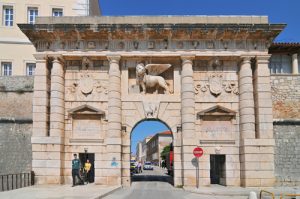
The Dalmatian Coast entered a new period of Venetian domination in 1202, when that ravenous city-state acquired a new weapon: a captive army of Western European knights. They were part of the Fourth Crusade, an expedition intended for Egypt which was to be transported in Venetian galleys; the knights were unable to pay their fare, so the Venetians allowed them to render payment in military service. Their first target: Zara. After a brief siege, the army sacked the city and transferred its possession to Venice.
By a convoluted turn, the crusaders ended up sacking Constantinople in 1204 and established an empire there for themselves there (they never made it to Egypt). The combined force doubled back to the Dalmatian Coast in 1205, where they forced the local cities to recognize Venetian suzerainty. For the next century and a half Venice would keep a tight hold on the region, integrating its cities into a trading empire that would make the Venetians wealthy.
The Dalmatian cities bitterly resented this. In addition to demanding tribute, the Venetians confiscated the majority of the customs duties collected by each port. These were by far the biggest sources of revenue for each city, making this a heavy burden. Venetian ships also received special trading privileges denied to the other cities.
Independence Again, Of A Sort
The age was coming to an end when sea power alone could secure a maritime empire. The kingdoms of that time were getting stronger, able to overwhelm the most stolid coastal enclaves. About this time Venice was starting to compete once more with a familiar land rival: the Kingdom of Hungary. Still in union with the Kingdom of Croatia, the king of Hungary was able to move in and secure the vassalage of many Dalmatian cities.
Venice maintained a colonial empire for so long because it was dominant at sea, and its enemies were usually weak or divided—Venice could usually acquire mercenaries or allies strong enough to defend them. When challenged on land by a serious power such as Hungary or Turkey though, they were almost always forced to cede ground. So when the king of Hungary assembled a large army and swept through the western Balkans. Within a year, he seized the coastal towns. The Treaty of Zara was signed in 1358, forcing Venice to relinquish all its remaining possessions in the Adriatic and its claims to Dalmatia. The cities of the coast returned to their old, cordial relationship with Hungary. So long as they made their payments and avoided alliances that conflicted with their sovereigns interests, they were free to do as they pleased.
The Dalmatian cities’ newfound liberty allowed them to pursue trade at a greater scale than ever before. Trade was expanding throughout the Mediterranean, and it was possible for merchant states that transported precious cargoes to become very rich. Foremost among them was one republic that would cast itself in the mold of the great Italian merchant republics.
The Jewel of the Dalmatian Coast
When people rave about the beauties of the Croatian coast, the first site they mention is inevitably Dubrovnik. That is the Croatian name for Ragusa, the most breathtaking of Dalmatian cities. The red-tiled roofs that perch above the Adriatic and the magnificent medieval walls recall another time—this is the city of King’s Landing from A Game of Thrones.
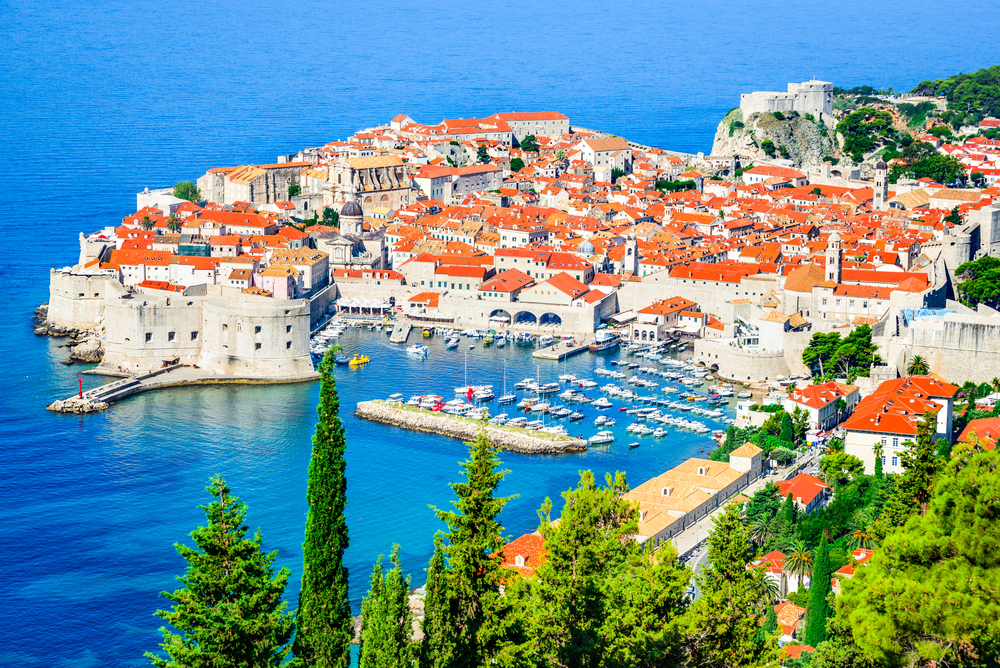
The stunning city is a product of Ragusa’s apogee as an independent republic. No longer enriching a rival in the centuries after Venetian rule, the city was able to engage in the booming Mediterranean trade. The city followed the model set by successful Italian cities such as Venice, Genoa, or Pisa: a republic dominated by an oligarchy of merchant-aristocrats. Their policy was above all to serve the interests of commerce, which blossomed as a result.
Ragusan merchants exported salt, textiles, minerals, and timber from the thickly-wooded hills surrounding the city; they sold products from around the Mediterranean and Black Sea throughout Italy and the Balkan hinterland. Although the republic’s actual territory was very small, they maintained a number of trade consulates wherever they did business on land or sea. This included several posts in the Black Sea, Italy, Spain, Greece, throughout the Balkans; it was one of only four states (the others were Venice, Genoa, and France) allowed to maintain a permanent trading post in Alexandria, and they even had a colony in Portuguese Goa. What makes this so incredible is the tiny population—one twentieth the size of Venice’s.
Venice Resurgent
The other Dalmatian cities flourished as well, but their time in the sun was much shorter-lived. Hungary began to suffer internal difficulties and soon had difficulty enforcing its claims. In 1409, the Hungarian king sold his claim over Dalmatia to Venice, which was able to secure all the towns north of Ragusa. In 1420, Venice acquired Cattaro and surrounding lands in the southernmost portion of the Dalmatian Coast, adding them to its Albanian possessions. Only Ragusa remained independent.
A few years before the Treaty of Zara was signed, the Ottoman Turks made their first incursions into Europe. They made rapid strides soon thereafter, and conquered vast swathes of southeastern Europe in the following decades—in the 15th century alone, they conquered nearly all of Greece, Albania, Serbia, and Bosnia.

In the wars Venice fought with the Ottoman Empire after the fall of Constantinople in 1453, the Turks labored hard to dislodge their rivals from their coastal enclaves. They pushed them out of harbors in Albania, mainland Greece, and the Aegean before trying to seize their ports on the Adriatic as well. The Dalmatian countryside was subjected to intense Ottoman cavalry raids, which even reached the Italian border. Many areas were occupied, and the cities themselves subjected to intense bombardment; only the superb system of Venetian defensive works saved them.
Ottoman Days
The only city to be spared these depredations was Ragusa, through a peace it brokered with the Ottomans in 1481. By the terms of the agreement, Ragusa became a vassal-state in return in return for trading privileges in Ottoman ports. Although the nearby interior was under direct Turkish control, Ragusa itself was left to manage its own affairs, largely as it had under Hungary or Byzantium.
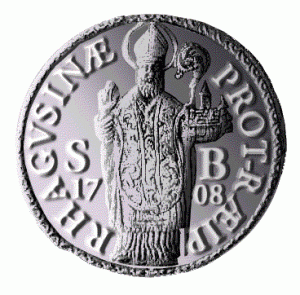
Henceforth all other Dalmatian cities would decline, being relegated to specific roles within the Venetian empire. The Republic of Ragusa, on the other hand, entered something of a golden age. As the only non-Ottomans who continued to be permitted entry to the Black Sea, they profited enormously from trade there, especially in grain.
The grain trade would profit Ragusa enormously over the centuries, not least in its relationship with Spain—twice during the 16th century, Ragusan ships delivered emergency shipments to the Spanish Crown during times of famine. Close ties between the two brought brought many opportunities for Ragusan ships and sailors: they participated in the Spanish Armada launched against England, participated in treasure fleets, and even sailed as far as the Philippines in Spanish service.
Such traffic with Spain was permitted by the Ottomans so long as the republic’s ships maintained strict neutrality during times of war between the two empires. As good Catholics, however, the Ragusans did pass intelligence on Turkish activity to the Spanish court, often at great risk of retaliation.
Power Politics
Ragusa’s good fortune naturally irritated Venice. The latter regarded itself as the natural master of the Adriatic, and Ragusa as a puny upstart. Moreover, Venice suffered mightily from ongoing conflicts with the Turks, while its rival got rich trading with the infidel. Venetian ships exerted constant pressure on Ragusa, harassing its shipping and even coming close to cutting its trade routes to the interior. This compelled the Dalmatian city to partner with Ancona, another Italian merchant republic on the Adriatic, in an alliance for trade and mutual defense.
The simmering conflict with Venice highlighted another advantage of vassalage to the Ottomans: the sultan’s fleet and army protected the city against Venetian depredations. Such tangible benefits that a tributary state such as Ragusa derived from its place in the Ottoman sphere shows that relationships between states were much more complicated than a simple master-slave dynamic. The term “client state” is apt: it suggests a service provided by the sovereign in return for tribute rendered, not mere thuggish extortion.

It should also be noted that just because a tributary state acknowledged a “sovereign,” that sovereignty was not always exclusive. The term did not imply a defined set of rights held by the sovereign power, as it does with modern nation-states—although it might be the basis for later such claims. Rather, it was a simultaneous recognition of a superior status on the one hand, and recognition of rights on the other, affirmed by the payment of tribute. Which was of course altogether different from government directly by the imperial administration.
So in 1684, nobody blinked when Ragusa recognized the sovereignty of the Austrian emperor while continuing to pay tribute to the Ottoman sultan. The Habsburg emperors of Austria were also the kings of Hungary, so this was considered a renewal of the ancient agreement between Hungary and Ragusa.

Recognizing Habsburg sovereignty was not any more of a burden than it had been in the past; as with Ragusa’s relationship with the Ottomans, it brought real benefit. For one, it helped the republic negotiate the complex dynamics of the Balkans at that time. Austria was on the ascendant following the Turks’ failed siege of Vienna in 1683, and would soon begin rolling back the Turkish frontier. It could be dangerous for smaller states caught up in between two hostile superpowers, and dual allegiance gave Ragusa options in the event of war.
In a further sense, recognizing a foreign power’s sovereignty brought the Ragusans economic benefit. In this instance, it extended Ragusa’s trading rights from Ottoman into Habsburg territories. For a small city-state that wholly depended on commerce, this was well worth the 500 ducats in annual tribute.
The glory days of the Republic of Ragusa were already behind it, however. A devastating 1667 earthquake had flattened the entire city, leaving it reeling for a generation. Intensification of European wars and dynastic power politics through the 18th century forced the merchant republic to tread a very delicate path simply to practice the commerce that sustained it. Its diplomacy was deft, but the days were coming to a close that a city of 5,000 souls could stand at the center of a worldwide commercial empire.
A Changing Dalmatian Coast
There had been great internal changes as well over the centuries. The Dalmatian Coast had grown increasingly Slavic in the past millennium, albeit in a process that unfolded at variable speeds: Zara seems to have been heavily Croatian by the 12th century, while Spalato refused to pay fealty to a Croatian potentate around that time on account of his ethnicity. Ragusa, on the other hand, merged with a nearby Slavic village named Dubrovnik during that period, giving the city its modern name. Which did not make the city thoroughly Croatian—the Senate of Ragusa made Dalmatian the official language of the republic in the 15th century, suggesting the city’s Roman-descended inhabitants still dominated the upper classes.

But the strong influence of Venice throughout the Dalmatian Coast had an interesting side-effect: the extinction of the Dalmatian language. Italian had long been an important trade language in the region; owing also to the language’s religious importance (many of the Dalmatian bishops came from Italy), it became the language of prestige. It was easy for upper-class Dalmatian speakers to learn this similar-sounding Romance language, and they soon neglected their native tongue. Without enough of a population base to sustain the language, Dalmatian fell out of use by the 17th century and went extinct in the 19th.
It was Croatian of course, not Italian, that was to become the language of the land. This was a simple product of demographics—a majority of residents in all the major cities spoke Croatian by the end of the Middle Ages. This migration of Slavs picked up pace in the 16th century, when the Turks drove large numbers of Christian Croats out of Bosnia. A great wave of them fled for the coast, where many took refuge in the cities; others hid out in the countryside, where they revived an old Dalmatian tradition: piracy.

Much had changed over the course of centuries, but the geography of the Dalmatian Coast had not. So it is no surprise that the Croatian refugees, deprived of their usual means of subsistence, took to the buccaneer lifestyle in terrain ideal for the purpose. Known as uskoks, they built forts near coast that were easily defensible from land and inaccessible by sea. From these, they began terrorizing the Ottomans in the Adriatic. Stories of their exploits entered local legend, portraying the uskoks as romantic fighters against their people’s oppressor.
A Return to Empire
Though long under the nominal sovereignty of various foreign powers—Byzantium, Venice, Hungary, Turkey—the Dalmatian cities managed to maintain a high degree of autonomy. But as governments grew more sophisticated and centralized, this freedom became harder to preserve. Soon the French Revolution unleashed the full power of the centralized administrative state: Napoleon’s conquering armies joined Dalmatia and Croatia together to form a region under direct French control. Imperial heavy-handedness was reinforced by a more organic trend: people themselves were coming to identify more as Croats than as Dalmatians. The disappearance of the Dalmatian language and other particularly Dalmatian cultural traits meant that the people of the coast came to share more in common with their inland neighbors.
Following Napoleon’s defeat, the Dalmatian Coast passed to the Austrian Empire, then became part of the Kingdom of Yugoslavia in the 20th century. Croatia declared its independence in 1991 and fought to bring the region under its control, securing its present boundaries by 1995. After this point, Western money began to flow into the region, and tourists started to arrive. Soon breathless Westerners were returning home to tell their friends and family about the stunning beauty of Dubrovnik, Split, and the Croatian islands.
How much of the old Dalmatian Coast truly remains, though? The marvelous cities are still there, and the natural beauty is of course eternal. But something of that intrepid spirit—of corsairs, sailors, and merchants—has no doubt been lost to the ages. After all, Venice and Genoa today both show that even the greatest maritime republics lose something of their charm when they become mere cities in a nation-state.
On the other hand….imagine a car speeding along the coastal highway. As the driver negotiates hairpin turns, the passengers catch glimpses of the glittering Adriatic to one side, the thickly-forested hillsides to the other. The sun shines warmly and sea breezes ruffle the passengers’ hair—is something of that old spirit not still alive today?
